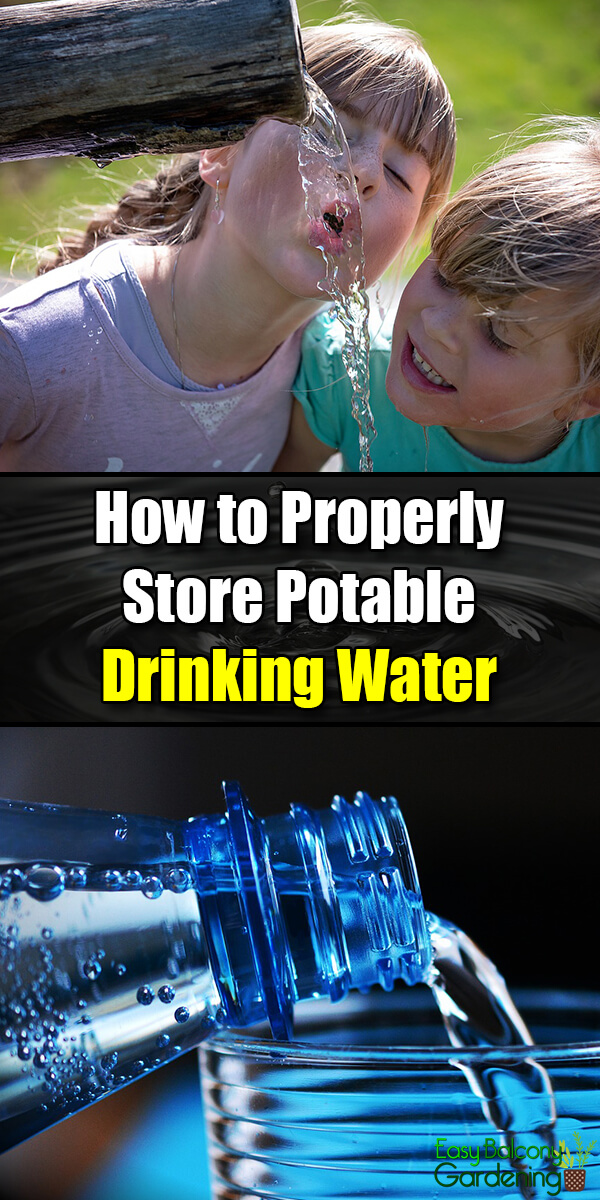It is provident living to have potable water storage. After all, you will need more water than food when it comes to sustaining life.
Treatment of Potable Water Storage
The following are basic guidelines for treating potable water for storage:
5% Sodium Hypochlorite (Household Bleach)
- One-half teaspoon of bleach per one gallon of water (equivalent to eight drops), if it is clear
- Double the amount if it is cloudy.
- Let stand for half an hour before using.
- To improve the taste, aerate it by pouring it back and forth several times between two clean containers.
2% Iodine Solution
- 12 drops of Iodine solution per one gallon of water, if clear; 24 drops if cloudy
- Let stand for half an hour before using.
Impure Water Treatment
If you suspect impurity, you may use one of the following methods of treatment:
Boiling
- The higher the elevation where you live, the longer you will need to boil away the impurities for safe drinking. Ten minutes of boiling may sound a long time, but better safe than sorry.
- Boiled water is tasteless. You may be able to restore some of the taste by aerating the liquid. Use two containers and transfer the liquid back and forth a few times. You can also pour the amount of liquid you want to drink in a larger container and shake it.
Chemicals
The most common treatment chemicals are the household bleach or iodine solution, as explained above. Outdoor supply stores, however, may have other chemicals to choose from.
Filters
There are several filters available in the market today. Additionally, there are those that include activated charcoal to remove the bad taste. Some filters also have chemicals to destroy bacteria.
Distilling
Distilling is a most effective method of treating impurities. However, it is a slow process and the equipment is quite expensive.
Potable Water Storage Containers
Whatever you decide on, containers for potable water storage should have the following characteristics:
- Airtight
- Sufficiently sturdy to hold the amount of liquid you are storing
- Breakage resistant
- Inside lining that is rust-proof
Additionally, potable water storage using plastic containers should be protected from light and heat.
Soda or Juice Plastic Bottles
- If you are using these containers, wash them thoroughly first. It is a good idea to mix a teaspoon of household bleach for every quart of hot soapy water.
- Swish the mixture in the bottle for several seconds. Rinse very well and allow to dry.
- Always wash your hands before filling the containers. Take care not to touch the inner side of the lids.
Water Heater
If you want potable water from the heater, close the inlet valve immediately upon disruption of the service.
Potable water storage should be located where your home can be protected from damage in case of leakage.







